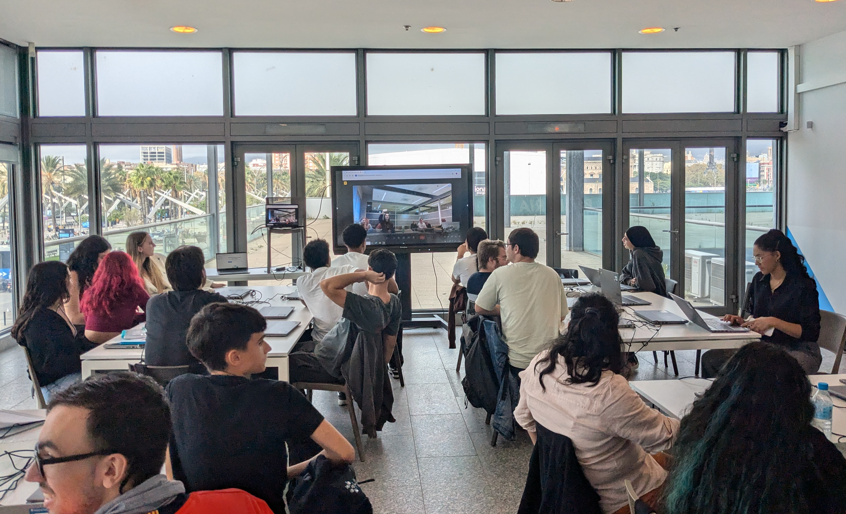Shacks by the Sea
El Somorrostro was one of the most iconic shack neighborhoods in the city of Barcelona. It was established around 1875, on a site where fishermen’s shacks might have previously stood. The neighborhood was hidden from prying eyes, nestled between the factories and the railway. In the 1940s, it began to grow with immigrants from other parts of Spain.
There were a total of 2,357 shanty towns housing approximately 18,000 people. Typically, families of at least nine people lived in squalor, crammed into cubicles measuring barely 4×3 meters. Naturally, except for sleeping or sheltering from the rain or the intense cold, life usually took place outside the shanty town. A large Roma community lived in Somorrostro . Most of the residents were workers, who left in the morning, commuted to the city center, and returned at night. They worked, but their low wages didn’t allow them to pay rent. A very current problem.
Shanty towns in Barcelona
Somorrostro was by no means the only shanty town settlement located in Barcelona. In the 1940s and 1950s, thousands of families lived in shanty town complexes. In 1945, the Barcelona City Council had recorded 138 shanty towns . In 1956, the Housing Board estimated that there were approximately 14,000 shanty towns. However, the City Council estimated that only half of them were registered.
The shanty town phenomenon was not new, but it had never before grown so exponentially. The industrial development of the first third of the 20th century, especially after the 1929 World’s Fair, and the installation of infrastructure (street lighting, metro and tram networks, etc.) and a multitude of other projects in a city that had quickly grown from 500,000 to a million inhabitants, required low-skilled and even lower-paid labor, much of it immigrant. At the same time, there was a lack of affordable housing for many of these people, both emigrants and even natives, but always with limited resources. The result was the emergence of increasingly numerous and crowded shanty towns. On the other hand, for the Administration, the barracks were an easy solution that saved them from having to build social or protected housing.
The end of the neighborhood
The destruction of the shacks began under pressure from the Civil Government in the mid-1950s and, in the case of Somorrostro , intensified with the start of work on the Paseo Marítimo in March 1956. The first phase of shacks was destroyed, those in front of the Catalana de Gas and the Hospital de Mar. The construction of the Paseo Marítimo was intended, in the words of the Urban Planning Commission, to “eradicate areas of shanty town and misery to turn them into beauty places suitable for humble but honest people, spas and “maritime trade” .
This action was the starting point for “cleaning up” the shanty towns in the area. Severe storms at sea, precisely during this time, helped demolish shacks that would never be rebuilt. For illustrative purposes, the press reported that a storm from the east swept away 33 shacks in which 197 adults and 69 children under the age of 10 lived.
Somorrostro was in its death throes until it came to a sudden and unexpected end. After years of plans to relocate its inhabitants, which never quite came to fruition, the remaining barracks were hastily demolished in June 1966. The reason? At the beginning of 1966, Julio Franco was presiding over the First Naval Week there . Amphibious military maneuvers that included a landing on Somorrostro beach . Some of the residents were relocated to apartments in Sant Roc , Badalona, and other homes. But many others were temporarily relocated to the Montjuïc Stadium, the Palace of Missions, and the Belgian Pavilion. They would spend years and years in these municipal buildings, as journalist Josep Maria Huertas Clavería reported at the time.










